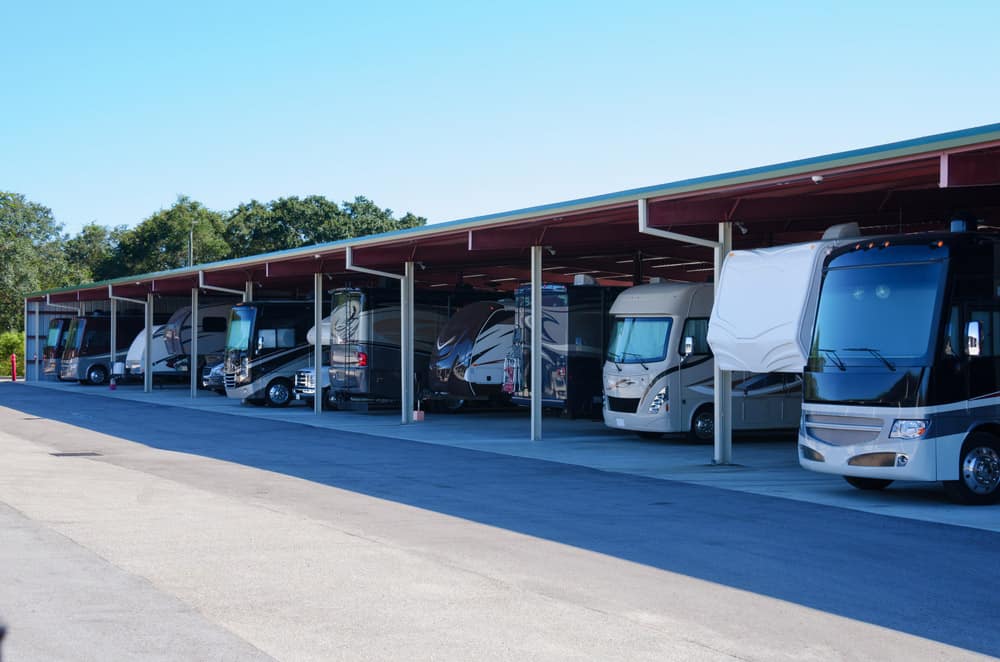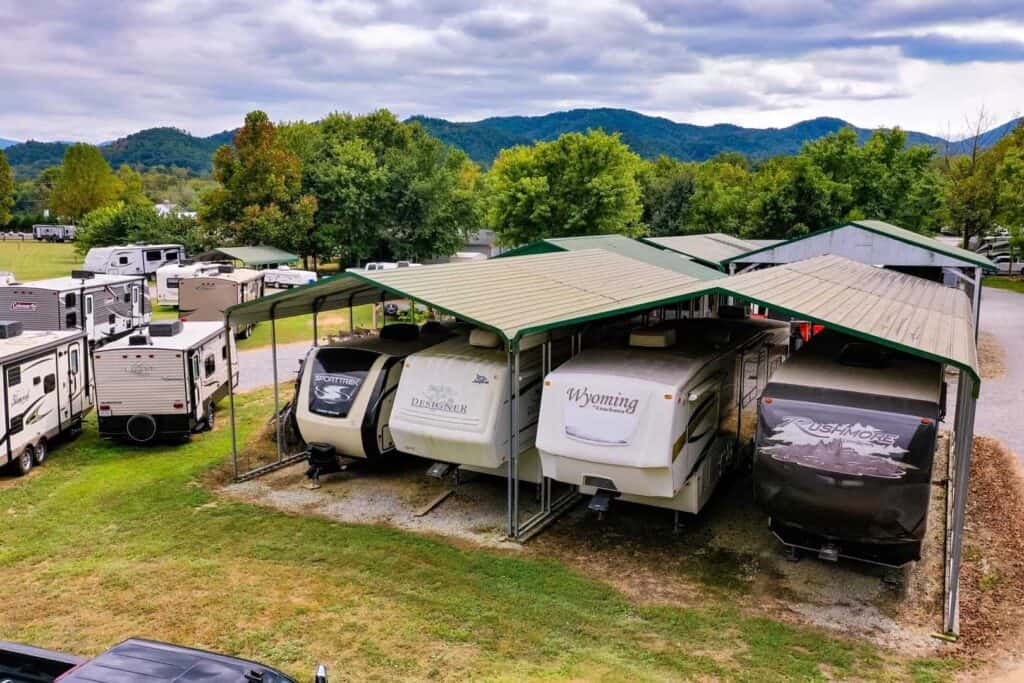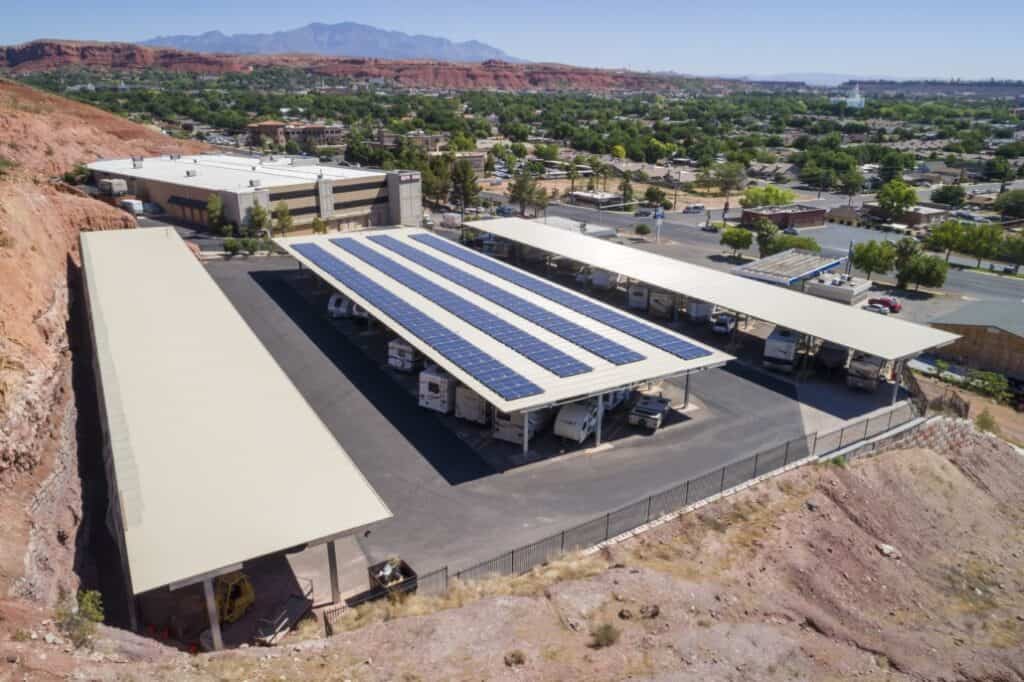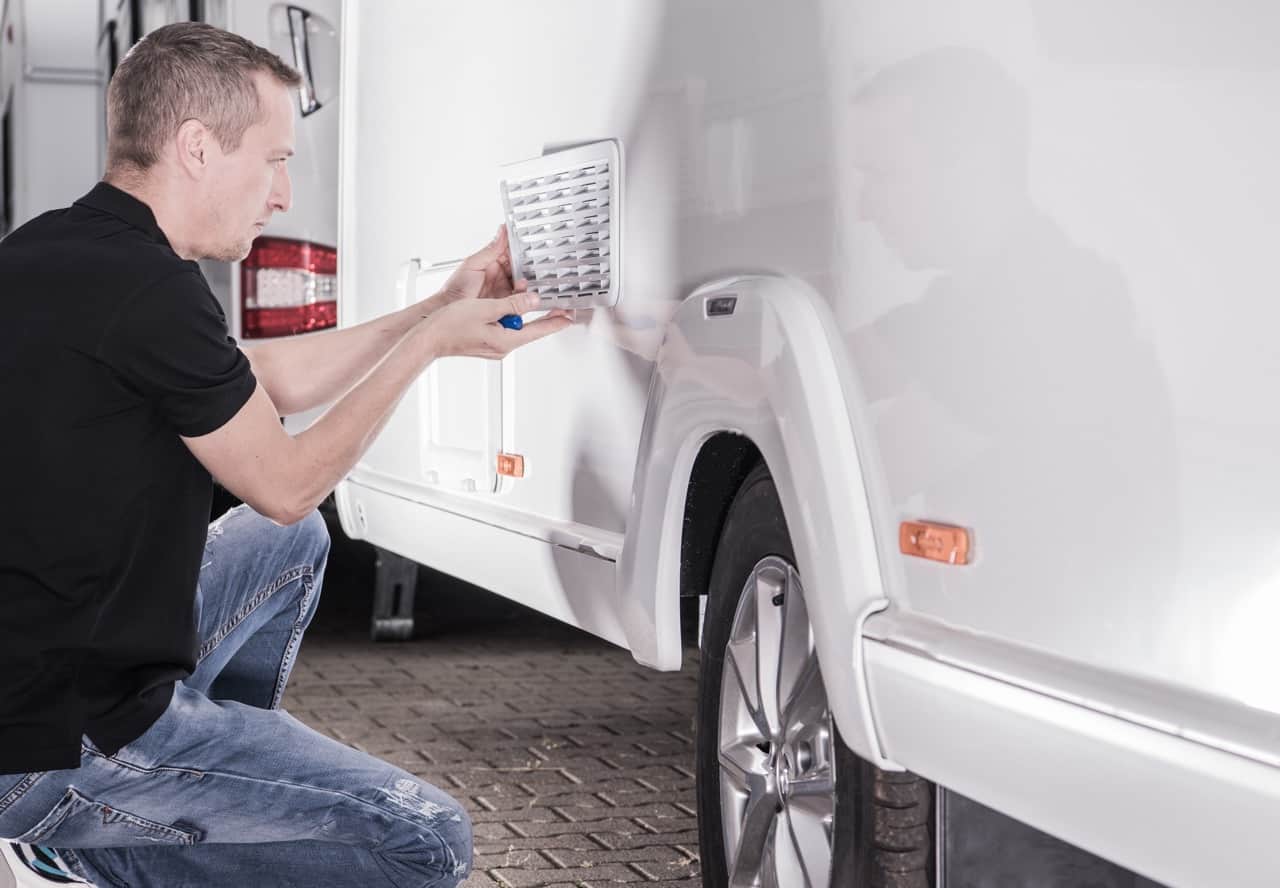
Covered RV Storage: Is It Worth The Cost?
Whether you are a seasonal RVer or sporadic adventurer, there comes a period when the RV sits dormant until it is taken out on another journey. RVs are stored at the owner’s residence, storage facilities, or campgrounds. The unit can sit outdoors, be tucked under a covered RV storage space, or parked indoors. For many RVers, this storage intermission lasts 6 months or more out of the year.
To protect your recreational investment, it’s important to take time considering how to store it when not being used. Yes, this does include forking over a little extra dough if you are looking at the optimal choices. Representatives of Elite Self-Storage in Sioux City, Iowa offer covered RV storage as an option to their customers.
“This is more expensive than RV parking but less expensive than indoor storage. It could represent the perfect “Goldilocks” option depending on your budget and your concern about how the weather will affect your vehicle.”
What exactly is covered RV storage?
A structure that offers a canopy or overhead shield for an RV is covered storage space.
While these carport-like structures won’t block out all the elements, their main function is to keep the toughest like rain, hail, snow, and the sun from damaging the RV.
Many storage facilities offer covered RV storage space for rent, however, there are RVers who prefer to erect their own housing structure on their property. If you are considering this latter option, Nicole Malczan of Camper Report gives a detailed account of what to consider before opting for RV storage at your place of residence in her article, “The Complete Guide to Storing Your RV at Home.”
What is the price of covered RV storage?
Regardless of the type of storage you are looking into, if you want to rent a space at a storage facility, costs will range depending on the size of the RV, location of the facility, and the amenities of the facility.
According to coastalsteelstructures.com, the average monthly cost of outdoor storage parking is $30 to $100 per month. Indoor storage monthly costs range from $50-$125 at the low end. Some locations that experience extreme harsh winters offer indoor heated storage for $400/month. Covered RV storage options sit right in the middle of outdoor and indoor options.
Not everyone has the option to store their RV at their residence, but if this is a possibility, building a carport structure on your property can end up being a more cost-effective solution.
A metal RV storage carport starts at about $1100. The best-covered RV storage for your RV needs to take into account the length, width, and height of the unit. Any other customization options are up to the discretion of the owner.

Pros of covered RV storage
Protection against the harsh elements
If you live in regions that are prone to harsh climates with extreme heat, cold, and rain, opting for a covered RV storage space may be just the route to help protect and prolong the life of your RV.
The sun’s UV rays alone can wreak havoc on an RV roof without proper coverage. The high heat-build up on the surface can result in seal damage. Now imagine that rain showers on that same roof which has been under these damaging UV rays for days, weeks, and months.
Weakened seals give way to leaking and potential water damage to the rig. This chain of unfortunate events can easily result in a several thousand dollar repair bill eliminating mold, internal water damage, and roof renovation.
The same applies to inclement weather like snow and hail. Mother nature can be very unforgiving, and although covered RV storage isn’t a completely enclosed structure, it can in many cases adequately protect the RV overall strength and durability against these elements.
Provides shade in the summer months
Scorching summer temperatures can turn up the heat in your RV. Your RV’s interior can degrade fast. Dashboard material can crack and fade, really anything inside that is made of wood, plastic, or upholstery. Besides utilizing covered RV storage, there are a few preventative measures that any RV owner can do.
First, cover all windows to prevent sunlight from entering. This can be done by simply closing all blinds and curtains. You can also use external windows shades like those from Magne Shade or go for a cheaper option like using Reflectix. Second, prepare all surfaces that can dry, fade, and crack by cleaning and conditioning. A condition specific to the material will safeguard your dashboard, leather seats, upholstery, flooring, wood, and plastics against sunlight and heat exposure.
Optimal storage based on use and location
Ideally, RVs are meant to be used more than stored. If your plan is to take your RV on the open road several times throughout the year, then utilizing a covered RV storage space is the way to go simply because it is the sweet spot between total outdoor exposure and very expensive indoor shelter.
In other words, your RV is still under an umbrella of protection, and it’s also not costing an arm and a leg to keep it secure the few times it is being stored.
Another aspect to consider is the region. If your RV will be stored in a location that experiences mild climate patterns, utilizing a covered RV storage space may be the best option. Not only will it have the overhead protection, but the need for a completely enclosed space with or without central heating may be over-the-top.

Cons of covered RV storage
Covered RV storage option is not as plentiful
Unless you can build a carport and keep your RV under the covered storage on your property/residence, your chances of finding outside facilities that offer covered RV storage isn’t impossible, but it is limited. Most storage companies have outside parking spaces available.
When it comes to covered RV storage, an RVer’s search does not end at simply finding a location that provides this type of storage. Another aspect to consider is the convenience of the location. RVers also need to make sure that their RV’s length and height can be comfortably contained under the overhead structure. It is worthy to note that although covered RV storage is a limited option, indoor storage is even more limited.
Your RV is still exposed to the elements
Unless your RV is enclosed in a climate-controlled, well-constructed building, it will continue to be subjected to the heat, cold, humidity, and anything else mother nature throws its way. All is not lost with covered RV storage, however.
There will just be a bit of storage preparation needed on the part of the RV owner. These steps won’t completely protect your rig from potential harm, but they will add a level of protection that the RV would not have otherwise. The following is a list provided by storage.com with some important preparation steps to take before putting an RV in storage:
- Washing your RV
- Lubricating moving parts
- Covering tires
- Cover with a breathable tarp
- Use moisture-absorbent material on the inside to prevent mold
- Disconnecting propane tanks
- Removing perishables and valuables
- Proofing for pests
Mice and other rodents have access to the RV
Rodents live outdoors, but sometimes they find sanctuary in cozy compartments of your RV, inside or in the underbelly. This is true if your storage space is located at a storage facility or on your property. Although your RV is undercover, there are no barriers to keeping wildlife at a distance.
Besides chewing through upholstery, wiring, and other RV parts, victorpest.com mentions, “Rodents can also spread disease, which makes the cleanup process potentially dangerous to your health. In fact, they are known to spread over 35 diseases.”
If you want to store your RV at a facility, before signing the rent agreement and giving away your money, inquire about how the company controls rodents. You can also prevent pests from entering your RV yourself using a number of tried and true methods. Shannon Goins from Do It Yourself RV shares the best way to keep mice out of your RV in this article.
Is covered RV storage worth the cost?
An RV’s value can be prolonged in several ways. Storing it properly is one key factor. The best possible storage scenario is undoubtedly keeping the RV in an indoor climate-controlled building. Realistically, for many of us, this option is not only costly, but it may not even be a possibility with the location in mind.
The next best option is covered RV storage. Although it is costlier than outdoor storage and does not provide the most overall coverage, it is the best of both worlds. It provides overhead protection from extreme elements, and what can’t be protected, the RVer can prepare the best they can from potential issues.
If you’re a handy DIYer, you may also want to consider building your own carport for covered RV storage. Mark Polk from RV Education 101 explains how to build one in this video:
One of the best aspects of being apart of the RV community is that there is always a fellow camper or professional in the industry to assist with any queries and offer advice.
If you are still on the fence about choosing a particular storage option, covered or not, talk to RV dealers, RV owners in your area, or RVers online on forums like iRV2 about their experience. With their help, you can determine what type of storage is best for you and your particular RV.





Great Blog! really informative!
Anyone looking for secured parking for there vehicles on weekly or monthly basis or RV storage facilities so do visit the link attached below.
Covered RV storage is definitely worth the cost. It may be exposed to heat and cold, but the shade and protection are enough to help for many off-seasons. My biggest advice for outdoor RV owners is to take care of their tires.
Having my rv under a hard covered space saves it from 80% of any damager from the environment. The idea of having to replace the roof, repaint the coach and all the drying out of seals and deterioration of a/c covers, vents and other “plastic” removed and discussion of it being too expensive. Go cheap now – pay later.
My RV is now 14 years old and looks like it is 2-3 years old. And hse remians mostly clea, ready to go and without deterioration.
Put a cloth cover on and off? On +30 ft? No way! I will gladly pay the 4k/yr to protect my investment.